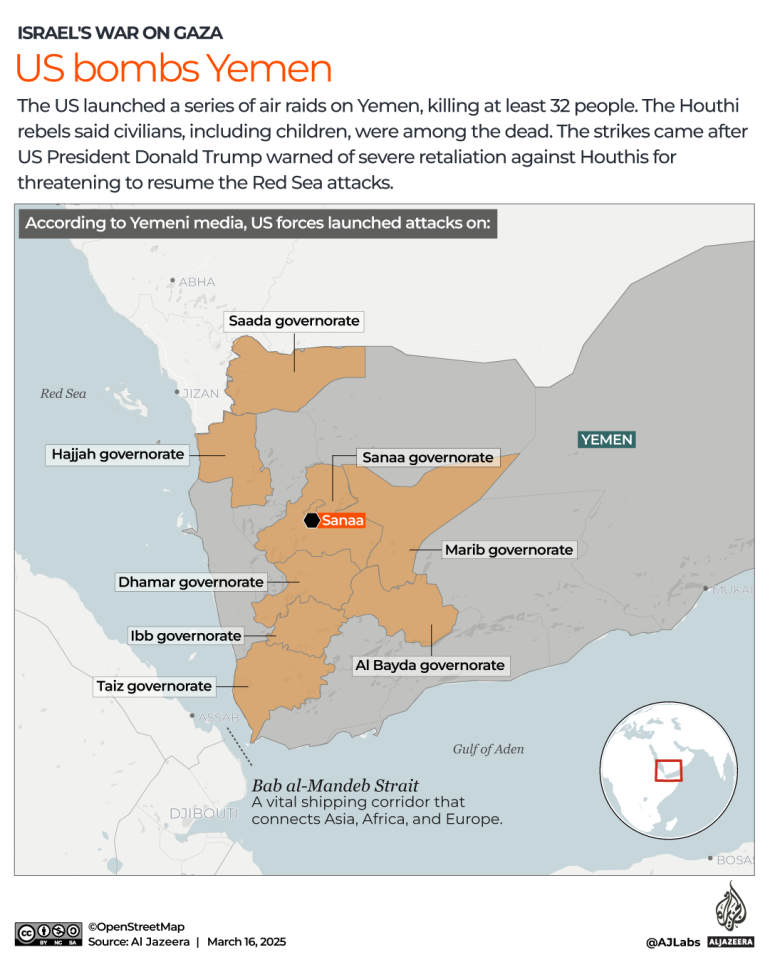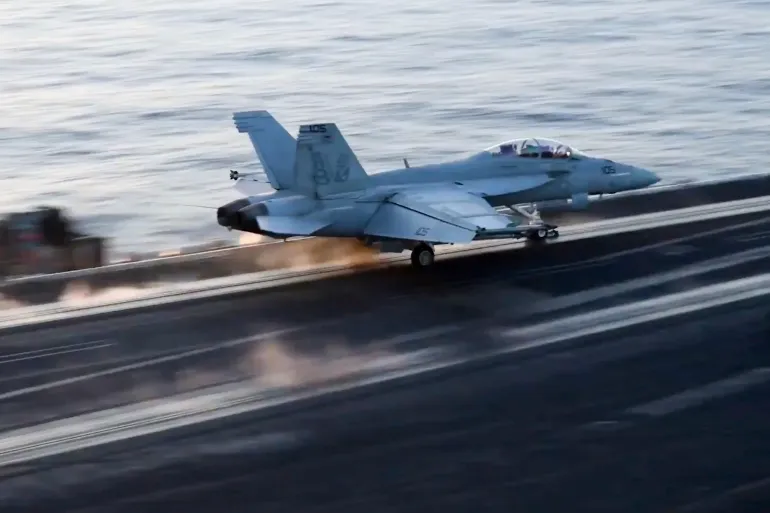US Intensifies Military Strikes Against Houthi Rebels in Yemen: Red Sea Crisis Escalates
Explore the latest developments in the US-led military campaign against Houthi rebels in Yemen, impacts on Red Sea shipping, and the humanitarian toll of escalating conflict.
US Officials Vow “Unrelenting” Response to Houthi Threats

Pentagon Chief Pete Hegseth declared on Sunday that U.S. military operations against Yemen’s Houthi rebels will remain “unrelenting” until the Iran-aligned group halts attacks on commercial and military vessels in the Red Sea. The statement followed President Donald Trump’s order for “decisive and powerful” strikes, emphasizing that assaults on American ships “will not be tolerated.”
Hegseth underscored the campaign’s objectives in a Fox News interview: “This is about freedom of navigation and restoring deterrence. The moment the Houthis cease firing at ships and drones, the operations end. Until then, our response will be relentless.”
White House National Security Advisor Mike Waltz confirmed the strikes’ success, stating, “We targeted Houthi leadership, infrastructure, and missile sites with overwhelming force. Iran is on notice.”
Humanitarian Toll: Casualties and Infrastructure Damage
Houthi authorities reported significant civilian casualties from the U.S. strikes, with at least 31 killed and 191 injured across Sana’a, Saada, and Al Bayda provinces. Local media highlighted women and children among the victims. Key incidents include:
- Ibb Governorate: 15 killed in airstrikes on residential buildings.
- Sana’a: Explosions in a densely populated neighborhood left 15 dead, described by residents as “earthquake-like.”
- Saada: A power station strike caused widespread blackouts, disrupting daily life.
U.S. Central Command confirmed the strikes targeted Houthi military assets but acknowledged reports of collateral damage.
Who Are the Houthi Rebels?
The Houthis, formally known as Ansar Allah, are a Shia militant group controlling northern Yemen, including the capital Sana’a. Key facts:
- Emerged in the 1990s; seized power in 2014, triggering a Saudi-led coalition intervention.
- Backed by Iran but maintain independent political goals.
- Control strategic Red Sea territories, leveraging attacks on shipping to influence regional dynamics.
Why Is the Red Sea a Global Flashpoint?
The Red Sea’s Bab al-Mandeb Strait is a critical maritime chokepoint:
- 12% of global trade passes through, including 8.8 million barrels of oil daily.
- Alternative routes (e.g., Africa’s Cape of Good Hope) increase shipping costs and delays.
- Houthi disruptions threaten energy security and economic stability, prompting U.S.-led interventions.
Escalation Timeline: From Threats to Military Action

The recent strikes follow months of Houthi attacks on Red Sea shipping, allegedly in solidarity with Palestinians during Israel’s Gaza blockade. Key events:
- November 2023: Houthis begin targeting commercial vessels.
- 2023–2024: 174 attacks on U.S. warships and 145 on commercial ships reported.
- January 2024: U.S. launches large-scale offensive, deploying aircraft from the USS Harry S. Truman.
Secretary of State Marco Rubio ruled out ground operations for now, stating, “No necessity exists for such measures.”
Global Repercussions and Diplomatic Moves
As strikes intensify, the U.S. pushes for a Ukraine ceasefire, with Special Envoy Steve Witkoff hinting at a potential Trump-Putin call. Meanwhile, Yemen’s humanitarian crisis worsens, with 80% of its population reliant on aid amid ongoing conflict.
Conclusion
The U.S. campaign against the Houthis underscores the volatile intersection of maritime security, regional proxy wars, and global trade. With no immediate resolution in sight, the Red Sea crisis threatens prolonged instability, humanitarian suffering, and economic ripple effects worldwide.
